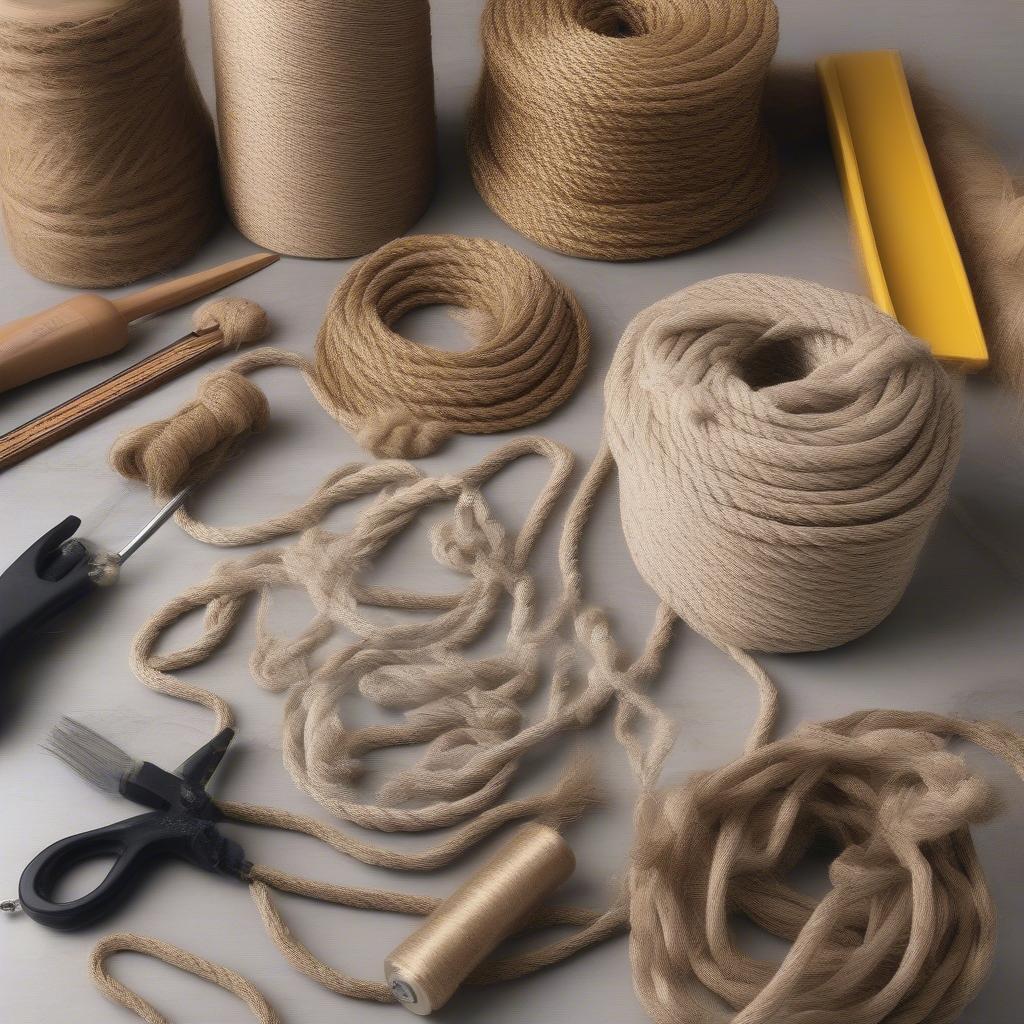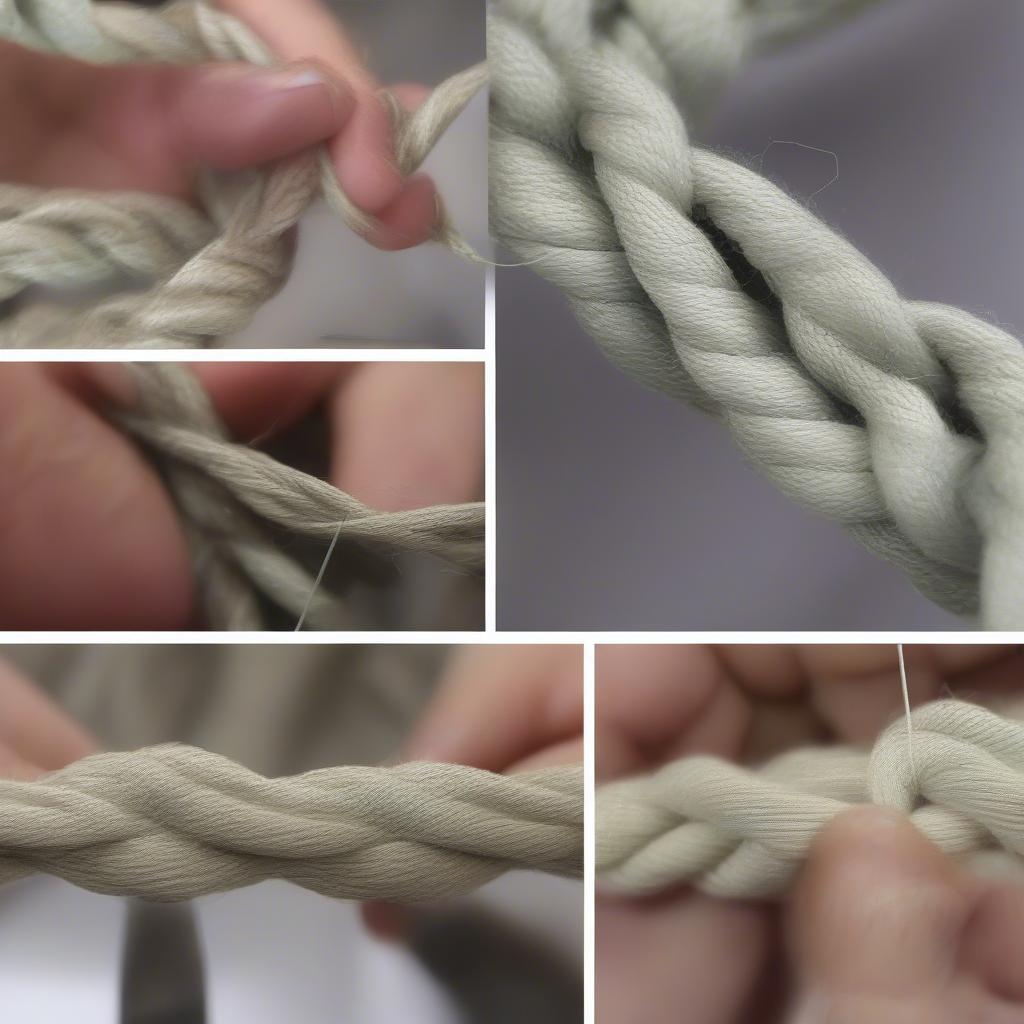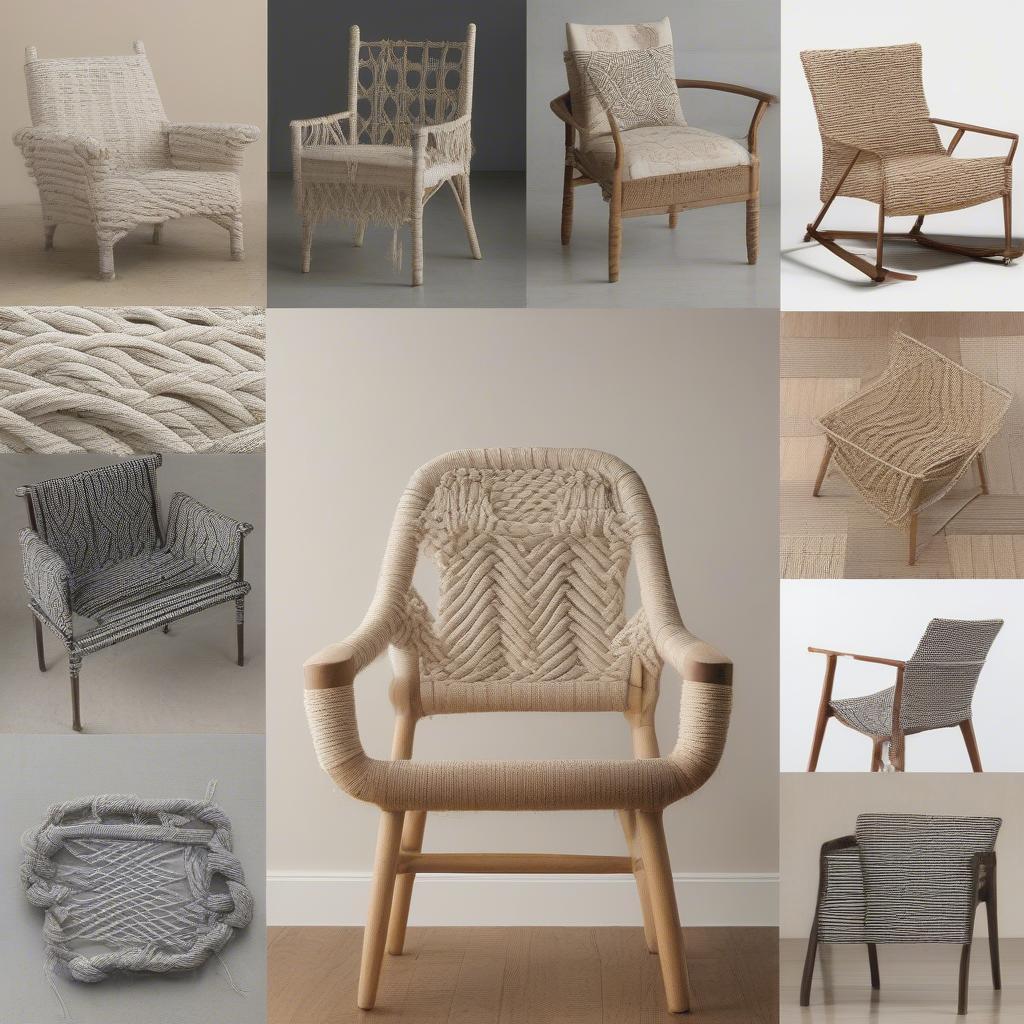Weave Chair
Chair Weaving with Rope: A Comprehensive Guide
Chair Weaving With Rope is a timeless craft that allows you to create beautiful and functional seating. Whether you’re restoring a vintage chair or adding a personal touch to a new one, this guide will provide you with everything you need to know about chair rope weaving. weaving rope chair seats offers a rewarding experience, blending traditional techniques with modern creativity.
Understanding the Basics of Chair Rope Weaving
Before diving into the process, it’s essential to understand the different types of rope, weaving patterns, and tools involved. Choosing the right materials will ensure the longevity and beauty of your finished project.
Choosing the Right Rope for Your Project
 Essential Materials for Chair Rope Weaving
Essential Materials for Chair Rope Weaving
The type of rope you choose will depend on the chair’s style, your desired aesthetic, and the intended use of the chair. Natural fibers like jute, sisal, and cotton offer a rustic charm and are ideal for indoor use. Synthetic ropes like nylon and polypropylene are more durable and weather-resistant, making them suitable for outdoor furniture. chair rope weaving can be achieved with a variety of rope types, each offering distinct advantages.
Exploring Different Weaving Patterns
From the classic herringbone to the intricate spider web, numerous weaving patterns can transform your chair. Each pattern offers a unique look and level of complexity. Simple patterns are perfect for beginners, while more intricate designs can challenge experienced weavers. Consider the overall design of your chair and choose a pattern that complements its style.
Step-by-Step Guide to Chair Weaving with Rope
Now that you have the basics down, let’s dive into the step-by-step process of chair weaving with rope.
Preparing Your Chair
Before you begin weaving, ensure your chair frame is sturdy and clean. Remove any old rope or remnants of previous weaving. Sand down any rough edges and apply a protective finish if necessary. This will ensure a smooth weaving surface and prolong the life of your chair.
Starting the Weave
Begin by securing the rope to the chair frame using a strong knot. Follow the chosen weaving pattern, carefully interlacing the rope through the frame holes. Maintain even tension throughout the process to achieve a uniform and professional look.
Securing the Ends
 Securing the Rope Ends in Chair Weaving
Securing the Rope Ends in Chair Weaving
Once you’ve completed the weave, securely fasten the rope ends. You can tuck them under existing weaves, tie them off with a finishing knot, or secure them with small tacks or staples. Choose a method that is both secure and aesthetically pleasing.
Tips and Tricks for Successful Chair Rope Weaving
nylon rope for chair weaving is a popular choice due to its strength and durability.
- Maintain Consistent Tension: Consistent tension is key to a neat and even weave.
- Use a Weaving Fid: A fid is a helpful tool for guiding the rope through tight spaces and ensuring a smooth weave.
“Attention to detail is paramount in chair weaving. A well-executed weave will not only look beautiful but also stand the test of time.” – Amelia Carter, Master Weaver
Choosing the Right Rope at Walmart
types of rope for weaving chair walmart offers a convenient selection for your project.
 Variety of Rope Weaving Patterns for Chairs
Variety of Rope Weaving Patterns for Chairs
chair weaving rope can be found in a wide variety of colors and materials, allowing for extensive customization.
“Experimenting with different rope types and patterns can lead to unique and stunning results. Don’t be afraid to let your creativity shine!” – James Miller, Furniture Designer
Conclusion
Chair weaving with rope is a rewarding craft that allows you to create beautiful and functional pieces. By following these tips and exploring different techniques, you can transform your chairs into unique works of art. Remember to choose the right rope for your project and maintain consistent tension throughout the weaving process. Chair weaving with rope is a skill that improves with practice, so don’t be discouraged if your first attempt isn’t perfect.
FAQ
- What type of rope is best for chair weaving? The best rope depends on the intended use and desired aesthetic. Natural fibers are suitable for indoor use, while synthetic ropes are better for outdoor furniture.
- What tools do I need for chair weaving? Essential tools include a weaving fid, scissors, and a measuring tape.
- Where can I buy rope for chair weaving? Rope can be purchased at craft stores, hardware stores, and online retailers.
- How long does it take to weave a chair seat? The time required depends on the complexity of the pattern and the size of the chair.
- Can I weave a chair with any type of rope? While many rope types can be used, some are better suited for chair weaving than others. Consider the rope’s strength, durability, and flexibility.
- What are some common mistakes to avoid in chair weaving? Common mistakes include inconsistent tension, improper knotting, and choosing the wrong type of rope.
- Are there any online resources for learning chair weaving? Yes, numerous tutorials and videos are available online to guide you through the process.
When you need assistance, please contact our hotline: +84 388 951 999, or visit our offices in Hanoi, Vietnam, or Tech Avenue, Suite 12, San Francisco, CA 94105, USA. We have a 24/7 customer support team.
